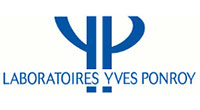
Once the PLM project has been properly set on track, it is important to stay alert to avoid it drifting away. There is considerable literature on project management and project management risks so we decided to focus on what we consider as the most critical when we specifically talk about PLM solution implementation projects. We hope you will keep these red flags in mind as they determine whether the implementation will lead to a sustainable end-user adoption or not.
1. PLM Project : Low Subject Matter Experts’ involvement
Impact:
Subject Matter Experts are the heart of your project, they know better than anyone what its needed, why its needed and what has worked and not worked in the past for your company. Their involvement is a must for any successful PLM implementation…
Mitigation:
SMEs must be able to take necessary time for project specification and configuration, to prepare workshops, to support their supplier when necessary and to internally engage all the stakeholders. If not, risk is high the project diverges from real expectations and does not match the business needs anymore.
2. PLM Project : Workshop preparation
Impact:
Underestimating the importance of workshop preparation and attending unprepared will most likely lead to inneficient work sessions, unclear specifications of strategic goals and end-user needs, project delays, extra-costs and eventually an unsatisfying solution.
Mitigation:
Make your SMEs aware of the importance of workshop preparation. The Project Manager has to make sure all pre-requirements are met before the workshop starts. Same goes for your supplier. A PLM project takes place in a holistic approach and has deep intrications into the daily life of your teams. Your SMEs and Project Manager(s) must collaborate closely with your solution provider’s team to make it a success!
3. PLM Project : User Acceptance Testing (U.A.T.)
Impact:
U.A.T. is the process of verifying that the PLM solution works for the user. The testing should be undertaken by one of your Subject-Matter Expert (SME). If the User Acceptance Test is not properly planned and executed, there is a high chance of not identifying the high priority risks to address before launching the project into production. This is critical as it is one of the final stages of the project before you accept your new system.
Mitigation:
Users of the system perform tests in line with what would occur in real-life scenarios. The broad nature of the test scenario ensures that the focus is on the journey and not on technical or system-speicifc details. It must be led in close collaboration between the client’s and supplier’s teams. Preparing for the UAT and building scenarios is a joint task between your PLM provider and your company. Orchestrating a UAT is no easy task. However, a supportive PLM provider will assist you through it.































